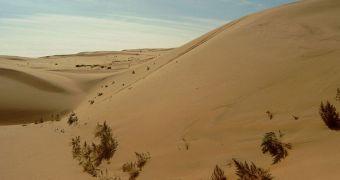According to a new scientific study, it would appear that early humans may have left the Sahara Desert via Libya. At this point, there are several theories about how our ancestors left the Old Continent, but most of them have been questioned in recent times.
Sub-Saharan Africa is widely and rightfully considered to be the cradle of civilization. The earliest fossils of modern humans have been found at this location. It is also clear that these people left the continent at some point, spreading around the world.
Researchers have been trying to figure these migration patterns out for years, but thus far their analyses have proven inconclusive, and provided conflicting results. Between 150,000 and 200,000 years ago, the first wave of migrations occurred, and humans spread all over the place.
Different researches propose various routes that humans may have taken while doing so, that avoided taking them through the deep desert. The latest such investigation shows that a wet corridor that existed on the territory of modern-day Libya might have provided our ancestors with the path they needed.
Images collected from satellites indicate the existence of such a corridor, with rivers extending from the center of the Sahara to the Mediterranean Sea. If this finding is confirmed, then the migration pattern would make more sense than in other theories.
Bristol University researchers say that using this corridor could have protected the humans as they were traveling across the vastness of the Sahara Desert. This is the second-largest desert in the world, exceeded in surface and roughness only by Antarctica.
“Space-born radar images showed fossil river channels crossing the Sahara in Libya, flowing north from the central Saharan watershed all the way to the Mediterranean,” explains the lead author of the research, Bristol expert Anne Osborne.
“Using geochemical analyses, we demonstrate that these channels were active during the last interglacial period. This provides an important water course across this otherwise arid region,” she goes on to say, quoted by Daily Galaxy.
For the investigation, the team collected readings on the isotopic composition of snail shells collected from two locations along the former riverbed. These data were then cross-referenced with similar readings collected on microfossils of plankton collected from the Mediterranean basin.
“The study shows, for the first time, that monsoon rains fed rivers that extended from the Saharan watershed, across the northern Sahara, to the Mediterranean Sea,” says Dr Derek Vance, who is the senior author of the new paper.
“These corridors rivaled the Nile Valley as potential routes for early modern human migrations to the Mediterranean shores,” he concludes.

 14 DAY TRIAL //
14 DAY TRIAL //